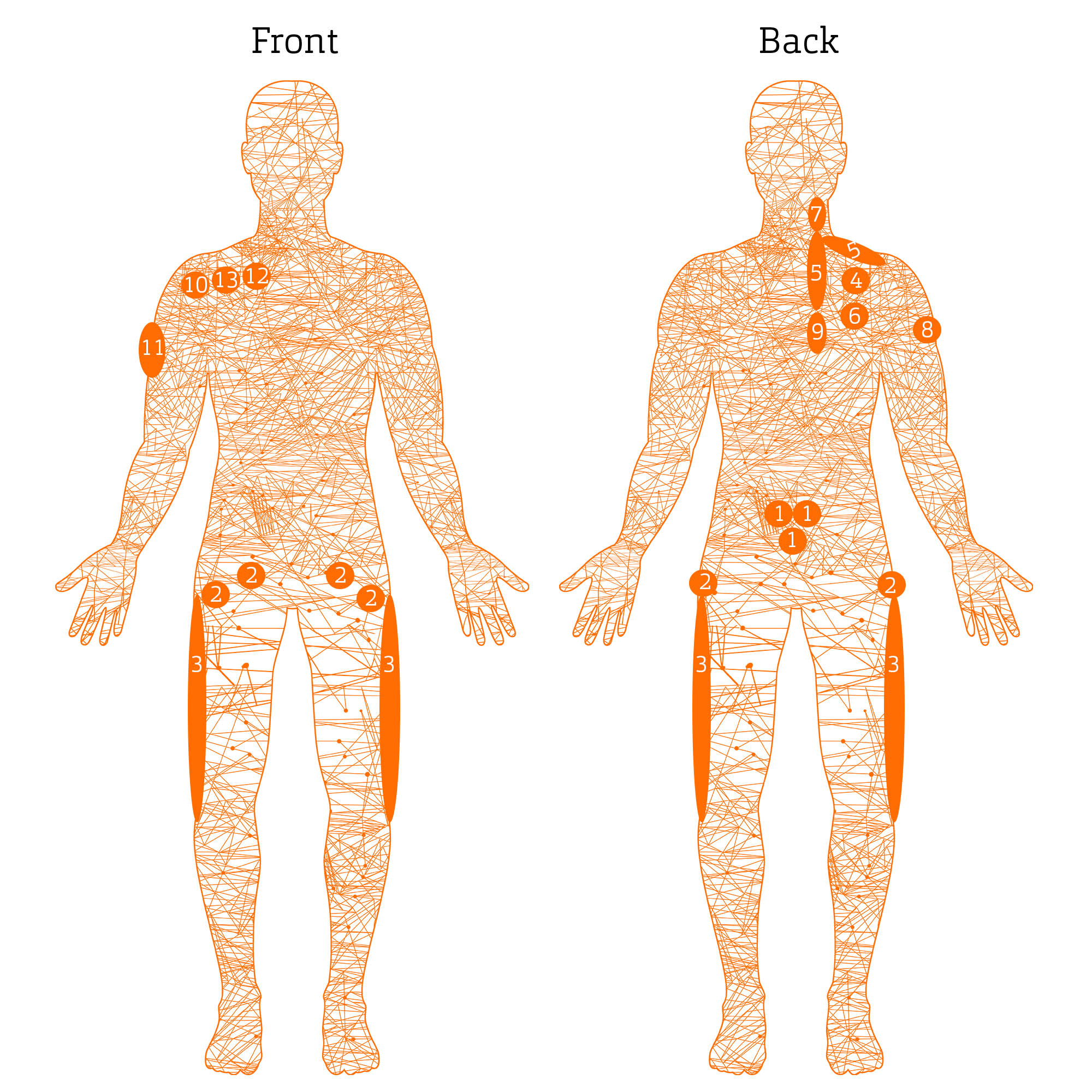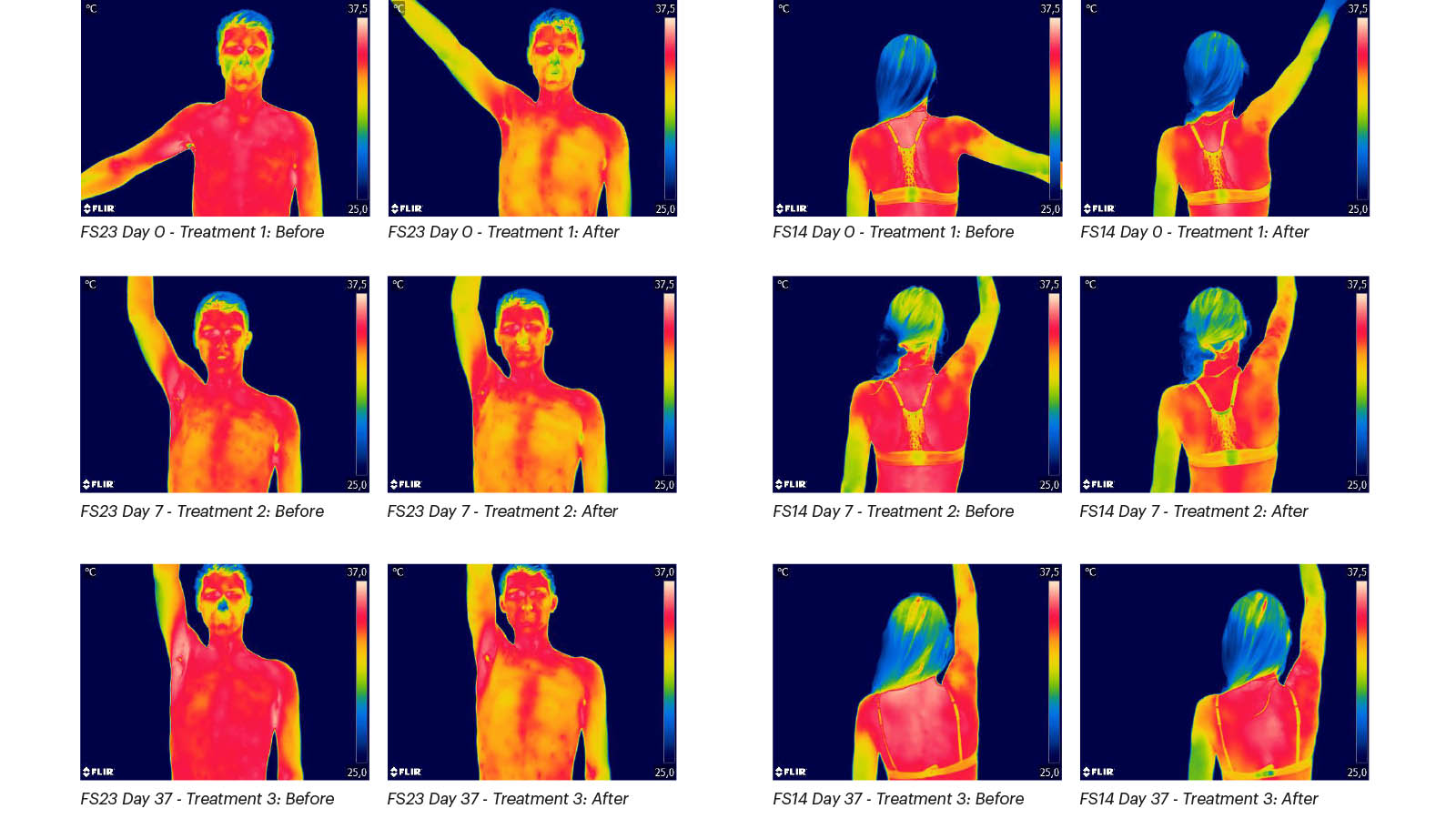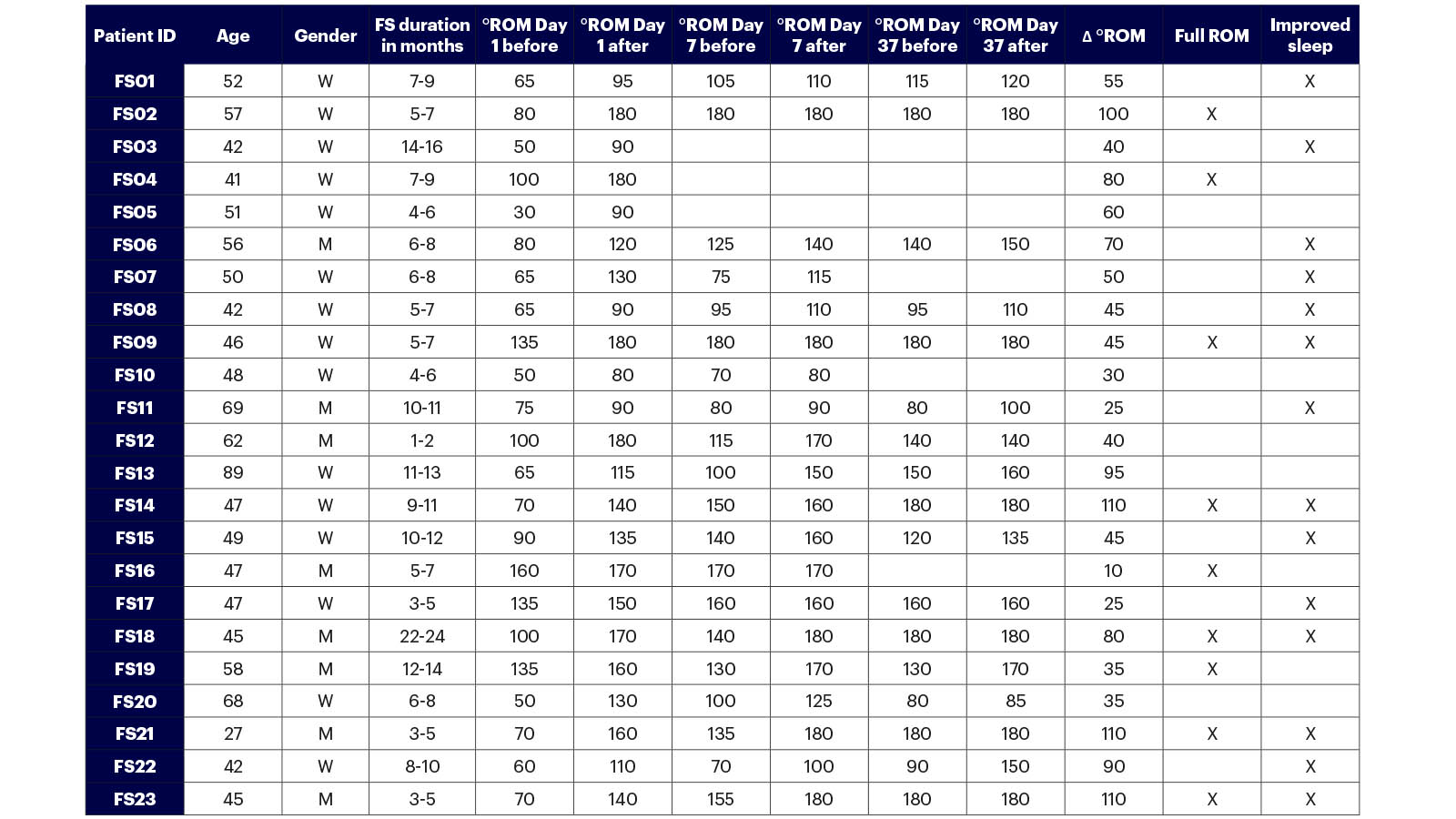

A new possible treatment for patients with Frozen Shoulder?
Join the Fascia Conversation Today!
Can myofascial treatment with pulsating vibrations improve mobility for patients with Frozen Shoulder? – A case study
Borg Håkan, Bohlin Hans and Ranje Nordin Camilla
Journal of Case Reports and Studies, 2019, Volume 7 | Issue 5
Thousands of patients are annually diagnosed with Frozen Shoulder (FS) or adhesive capsulitis, where the joint capsule contracts and becomes less flexible. The condition is painful, with reduced range of motion (ROM) in the shoulder and arm and causes great suffering, often with difficulty sleeping and greatly reduced work ability. The treatment given today is partly conventional treatment with cortisone or NSAID preparations as well as physiotherapy and other therapeutic treatment which usually have limited effect.
A study was initiated after approximately 50 patients with FS had received this type of treatment with increased mobility as a result. As current FS treatment methods have a limited positive effect, this study aims to explore if this type of treatment could be a possible solution for the future.
The study investigates whether myofascial treatment, using a device generating deep pulsating vibrations, can provide increased ROM and facilitate for these patients.
23 patients diagnosed with FS were included in the study. Three treatments were performed, within set time intervals. The ROM was measured before and after each treatment, pictures were taken with a thermography camera and angles were measured.
The result showed that 87 percent got an increased ROM by 30 degrees or more, that 52 percent of the patients improved ROM by 60 degrees or more, and that 30 percent regained full ROM. 61 percent of the patients also reported improved quality of sleep.
The study indicates that this treatment could possibly improve ROM and well-being for patients with FS. Further studies are recommended to evaluate and validate these findings.
A validated treatment of FS could mean great socioeconomic benefits and an increased quality of life for patients diagnosed with FS.
Innovative treatment tools used by hundreds of therapists
With a new innovative way to look at the body, based on the latest research, the Swedish Med-Tech company Fascia Innovation are getting attention in Helsinki, Berlin, London & Frankfurt.
By machines optimized for treatment of Fascia, the treatment method has helped thousands of people with problems like Frozen Shoulder and low back pain.
“Now we have all the research we need to prove the success we have had with our treatment – and you get amazing results really quick” says Hans Bohlin, the inventor behind the award winning products
The study in short
Patients: The inclusion criteria were patients diagnosed with primary Frozen Shoulder
Arrangement: Three treatment sessions within 37 days
Photographing: Range of Motion was documented with a thermography camera. Movements were performed before & after treatment and images were taken in six different positions.

Treatment: Soft and deep Fascia treatment for about 40 min using two Fascia Vibes treatment tools (harmonic pulsating waves). The following areas were treated.

- Sacrum
- Iliopsoas
- IT-band
- M. Supraspinatus towards the shoulder joint.
- All muscles between scapula and thoracic spine, M.Levator scapula, M.Serratus, M.Splenius, M.Rhomboideus, M.
Trapezius thoracis. - Scapula’s lower part, M.Infraspinatus, also M.Triceps brachii’s origin at the shoulder joint.
- Skull base and the neck side and the whole M.Trapezius cervicis towards the shoulder joint.
- Lateral side of the upper arm, M.Deltoideus and all muscle attachments to deltoid tuberosity of humerus.
- The lower part of the thoracic spine, the lower part of M.Trapezius thoracis and under the scapula to reach the M.
subscapularis, with the arm behind the back. - M.Biceps brachii’s long tendon, bursa intertubercularis and M.Pectoralis attachment to shoulder and upper arm.
- M.Biceps brachii.
- M. Subclavius
- M. Pectoralis major and minor

Results
Of 23 patients who started the study, 17 completed all three treatments. Three discontinued after the first treatment (one regained full ROM after one treatment) and three terminated after treatment number two. Of the 17 who completed, seven regained full ROM.
All patients were given increased ROM to varying degrees.
61 percent of total 23 patients experienced an improved quality of sleep.
Two of the patients who regained full ROM have had the problems between one to two years. The concentration of heat in the neck noted on three patients, disappeared in all cases after the first treatment. Six patients had limited improvement after the treatment, and all of them have other issues correlated to fascia adhesions.

Fascia – The Body’s Network Without Beginning or End
- A new Fascia documentary premieres on October 18th 2022
- It is an introduction to Fascia as a paradigm, as an organ and as a new way of thinking
- The aim is to get as many people as possible interested in this new research and to give people knowledge about their bodies in a simple way.






